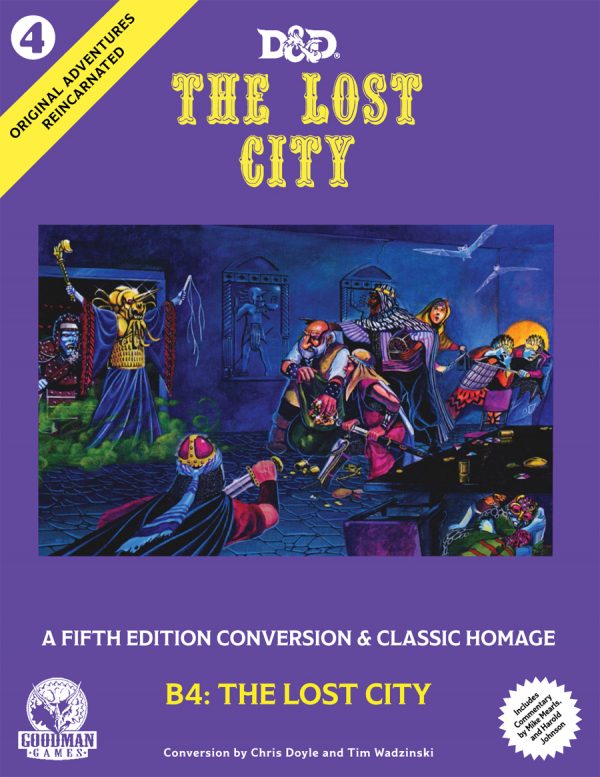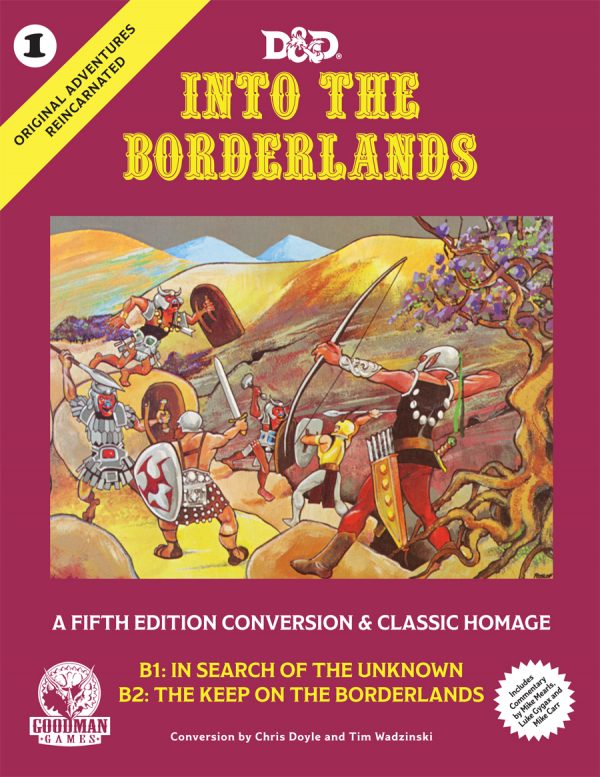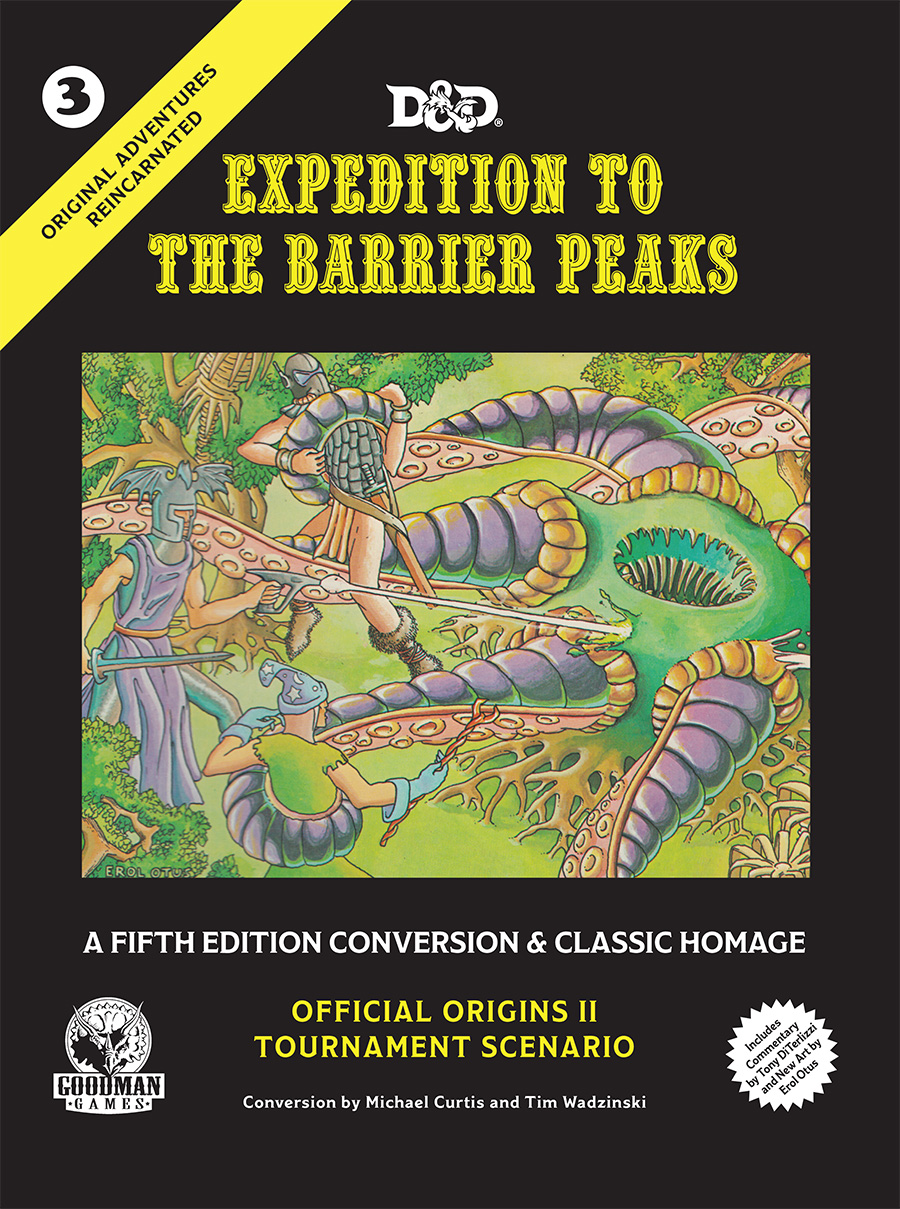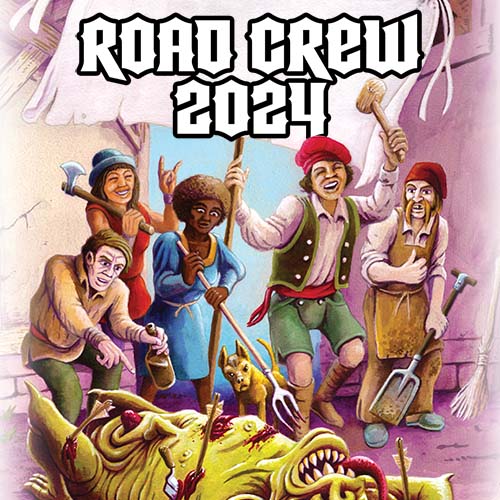The Process of Converting a Classic Adventure Into An Original Adventure Reincarnated
By Chris Doyle
When interacting with the fans of the Original Adventures Reincarnated books, often the first question I get is, “How do you go about converting the module to fifth edition?” (This is usually followed up by, “How can a 32 page 1st edition module end up as a 300+ page homage?”, and “How come a pdf doesn’t come with the book?”). Today I’m going to discuss the design process I use when approaching a project such as this.

The first step involves re-reading the source material (the original module) and any additional later edition conversions. And then I read it again, this time in pdf format, so I can print it out and scrawl notes and highlight important sections. Next, a search of any other articles or source material directly related to the module. For The Lost City, this included Chapter 10 (Zargon) of Elder Evils (2007), a 3.5 edition WotC supplement, Mystara: Return to the Lost City by Mike Mearls in a 2004 Dragon Magazine article, and Masque of Dreams, an adventure in Dungeon Magazine (2007) by B. Matthew Conklin III. During this process, I develop lots of notes and generating concepts for newly designed encounters.
Next come the spreadsheets. You can never have too many. The first is an overall summary of the project. This is a tracking document, to guide the tasks of the conversion: assign natural chapters, identify additional sections to develop, assign due dates, and track word counts. The next spreadsheet is the Creature Log. This is a list of all the new 5E converted monster stats and where they came from. Some are new monsters in the original module, some are in other official WotC sourcebooks, and some are new designs, although these tend to be based off critters originally designed from the Basic or Expert rulebooks or 1st edition monster books. This tool is designed to make the editorial department’s (I shall call him, “Tim!”) life easier to track down where these creatures came from.
Now I’m ready for converting monsters to 5E. This is the first actual writing task. I generally design most of them before I get to converting the original material, but a few extra always pop up. I’ll also try to develop any new spells or magic items at this stage, although this process is often ongoing as I delve into the details of the original module.
Next, it’s onto the 5E conversion of the original module. I try to alter the text as little as possible during this stage, to keep that first edition essence, especially the esoteric terms often used in the late 70’s and 80’s. Generally, this involves moving text around to put it into easy to use and standard 5E formats. This might look like the following (although some parts are omitted):
- Encounter # and Title
- Notes to the DM
- Read-aloud Text
- Environment Description for the DM
- Creatures/NPCs
- Creature/NPC tactics
- Treasure
- Developments
This is also the time to develop player handouts and add sections to facilitate the modern gamer running this classic at the game table. For example, adding read-aloud text as needed, or sidebars to fully develop concepts. During this time, I continue to generate notes regarding new material that can tie into the original.
Then we get to the truly creative part of the process: designing all-new 5E material to supplement the original adventure. This part varies in scope depending on the source material. In The Lost City, there are extensive areas developed for 5E gaming, easily the most of any OAR product to date. This includes wilderness encounters in the desert, fully designing the five lower levels of the pyramid, enhanced details on the lost city, and fully developing several catacomb areas beneath the city.
The last stage involves adjustments to the maps for delivery to the cartographer. The maps are worked on through all the steps outlined above, but at this stage I clean them up and generate a pristine copy for reproduction (or creation in the case of a newly designed location). Then I get to work on the illustration suggestions for the entire book. Then it’s off to the other members of the team to work their magic, be it editorial, drafting, or illustration. At this point in time, the designer is done, and gets a few weeks off to recharge the batteries (although I’m usually already thinking about the opening stages of the next project). Then we move into the review and layout stages.
The key to working on a project of this scope is to break it down into smaller tasks that are easier to wrap your head around. That way they can be assigned to different members of the team, or if there is but one primary designer, it helps manage the tasks and allows for the achieving of smaller milestones along the way. If I don’t feel like converting text today, maybe I can convert monsters to 5E or draft some maps. Always keep rowing forward!














